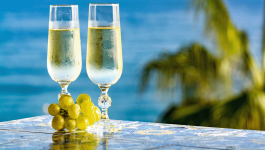The Yellow Wild Indigo Flower, also known as Baptisia sphaerocarpa, is a beautiful wildflower native to North America. Its striking yellow color and tall size make it an eye-catching addition to any landscape. In this article, we will take a closer look at this lovely plant, including its physical characteristics, where it grows, and how to care for it.
Physical Characteristics
The Yellow Wild Indigo Flower is a perennial plant that belongs to the legume family. It typically grows to a height of 3-4 feet and has a spread of 2-3 feet. Its green, clover-like leaves are around 2-3 inches long, and its vibrant yellow flowers bloom in late spring to early summer. The flowers are pea-like in shape and grow on spikes that can be up to 12 inches long.
Where It Grows
The Yellow Wild Indigo Flower is native to North America and can be found in the eastern United States, from Maine to Georgia and west to Illinois and Missouri. It grows best in full sun to partial shade and prefers well-drained soil. This plant is often found in open fields, prairies, and along roadsides.
Caring for Yellow Wild Indigo Flowers
Yellow Wild Indigo Flowers are relatively easy to care for and are low maintenance. Once established, they can tolerate periods of drought and are generally pest and disease-resistant. It is essential to ensure that the soil is well-drained, as these plants do not like wet feet.
If you want to propagate Yellow Wild Indigo Flowers, it is best to do so in the fall by dividing the roots. This plant can also self-seed, and the seedlings can be transplanted in the spring.
Conclusion
The Yellow Wild Indigo Flower is a beautiful addition to any garden or landscape. Its striking yellow color and tall size make it an eye-catching plant that is sure to grab attention. If you live in North America and have a sunny or partially shaded area with well-drained soil, this may be the perfect plant for you. With a little bit of care, you can enjoy the beauty of the Yellow Wild Indigo Flower for years to come.



